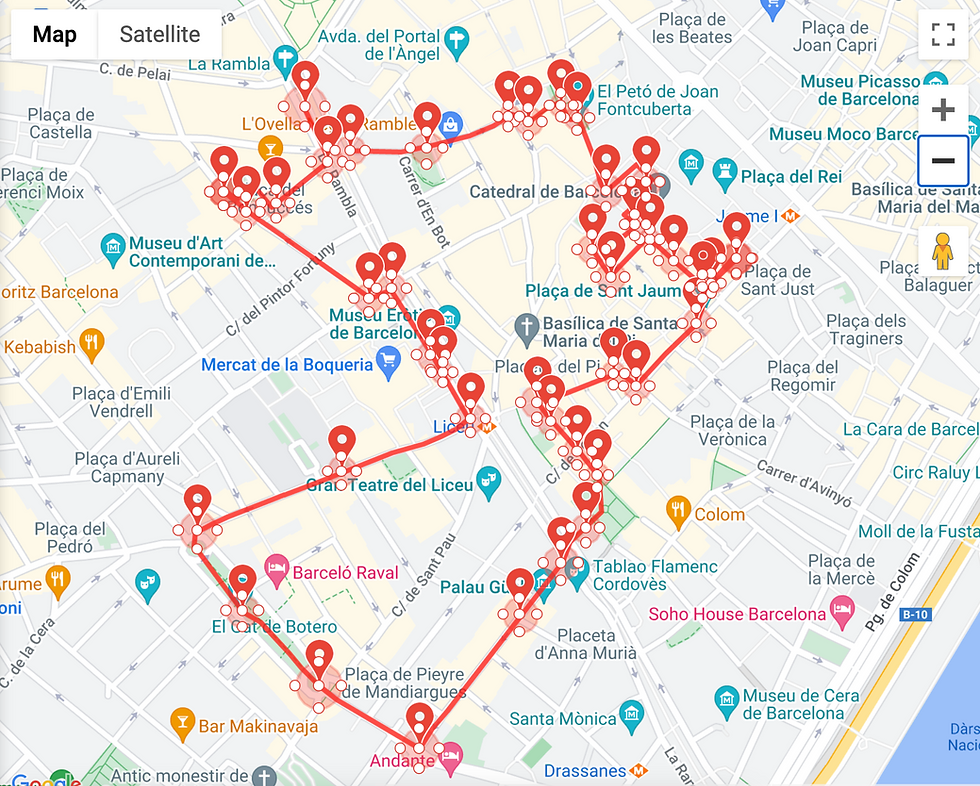Historic Valencia - a city with its back to the wall
- Spain Walking Tours

- Apr 14, 2023
- 2 min read
Updated: Jul 3, 2023

Throughout its long and vibrant history, Valencia has been marked by its fortified walls, serving as a testament to the city's resilience and strategic importance. From its early Roman origins to the present day, the evolution of Valencia's walls reflects the ever-changing dynamics of power and influence in the region.
Valencia's story begins in 138 BC when the Romans established the settlement of Valentia on an island in the Turia River. Recognising the strategic advantage offered by the river, the Romans, renowned for their military prowess, decided to bolster the defences of their burgeoning town by constructing a protective wall.
As the population and prominence of Valencia grew, so did the wall that enclosed it. Over time, the city experienced the rule of different conquerors, and the shifting location of the wall became a tangible representation of these historical phases. Following the Romans, the Visigoths, a Germanic Christian clan, took control of Valencia. With the expansion of the town, the Visigoths extended the wall, giving rise to what is now known as the "Visigoth Wall."
In the 8th century, Valencia fell under the occupation of the North African Moors, transforming into a Muslim Caliphate. The Arab Wall, an extension of the fortifications, spanned the entire island, ensuring the safety of the city's inhabitants. For five centuries, Valencia flourished under Moorish rule, leaving an indelible cultural and architectural imprint on the city.
However, the tides of history eventually turned, and in the 13th century, Christian forces overpowered the Moors, leading to the city's renaming as Valencia. By the 15th century, the river that once provided natural protection had been filled in, and the wall assumed even greater significance as the city expanded. The Medieval Wall, standing strong until the 19th century, became a symbol of Valencia's heritage and resilience.
While sentimentality played a part in preserving the wall, its practical military function had diminished in the face of modern weaponry. Consequently, it was gradually dismantled, making way for the city's urban development. However, two remarkable remnants of the wall still stand today, bearing witness to Valencia's storied past.
One of these remaining structures is the Towers of Serranos, an iconic gate that was once part of the Medieval Wall. Situated close to the city centre, the Towers of Serranos served as the unofficial main entrance to Valencia. Welcoming ceremonies for visiting dignitaries and royalty were held here, while unknown visitors underwent screening akin to modern-day airport customs procedures. Today, the Towers of Serranos continue to captivate visitors and stand as a testament to Valencia's rich history.
As you explore the vibrant streets of Valencia, take a moment to appreciate the significance of its walls. From the Roman beginnings to the Christian conquests and Islamic heritage, the story of Valencia's fortifications reflects the resilience, adaptability, and cultural amalgamation that define this remarkable city. The Towers of Serranos, in particular, offer a glimpse into the past and are a must-see attraction for anyone seeking to uncover Valencia's historical treasures.
Take a deep dive into Valencia's rich history on a Self-Guided audio tour on Voicemap and visit Torres de Serranos. Just download the tour, connect your headphones and the tour will walk you through the city's most loved attractions.





Comments